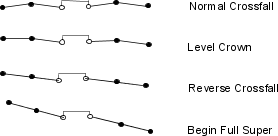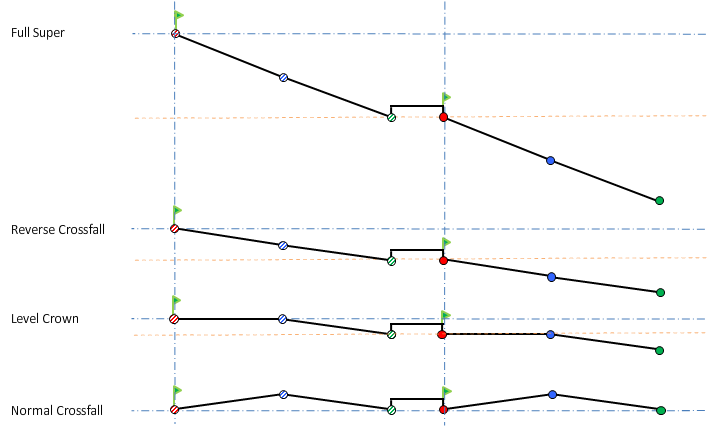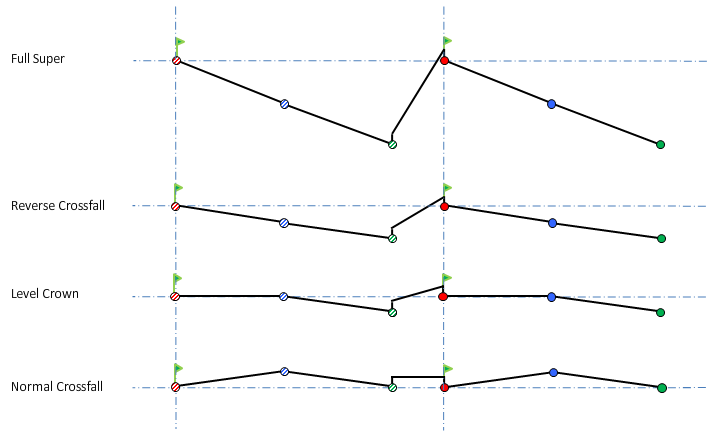This section describes situations for divided roads and illustrates how superelevation is applied for each situation.
Dual Planar Carriageways
The following illustration shows a divided road as the corridor type and the cross section shape is planar. The carriageway undergoes adverse superelevation applied from Low channel during superelevation:

Dual Crowned Carriageways
The following illustration shows a divided road as the corridor type and a crowned cross section shape on each side. The carriageway undergoes adverse superelevation applied from Low channel during superelevation:

Central Reserve Treatments
In dual carriageways, there are typically two options for superelevating each side of a dual carriageway.
Maintain Central Reserve Shape
Maintain Central Reserve Shape means when superelevation is applied, the central reserve raises to accomodate the superelevation. This option maintains the central reserve shape, and the  pivot points raise or lower.
pivot points raise or lower.

Distorted Central Reserve
Distorted Central Reserve means when superelevation is applied, the central reserve width remains that same, but either side raises or lowers to accomodate the superelevation. This option distorts the central reserve shape, and the  pivot points maintain their original position.
pivot points maintain their original position.
